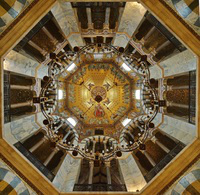Speaker
Description
The mean lifetime for $\beta$-decay of a free neutron is an interesting empirical target because it is an input for calculation of light element abundances in the early universe, affects predictions from cosmic microwave background data about the number of effective neutrino species, and in combination with other $\beta$-decay observables can provide sensitive tests for physical phenomena not currently included in the Standard Model. Theoretical uncertainties and uncertainties in astrophysical measurements make the interesting precision band for measurements of $\tau_n$ between $0.1\%$ and $0.01\%$. Current experimental techniques have the capability to reach precisions in this range, but a clear application of the resulting measurements is hampered by a nearly four-sigma discrepancy between the two prevalent methods, called the "beam" and "bottle" techniques. The recent UCN$\tau$ result \begin{equation}\tau_n = 877.7 \pm 0.7_\mathrm{(stat)} +0.4/-0.2_\mathrm{(sys)}\end{equation} is of the latter type, and maintains the discrepancy between beam and bottle determinations despite using a large-volume magneto-gravitational trap which eliminates the dominant systematic effect in material bottle experiments and features new detection techniques that allow direct empirical characterization of residual systematic effects. This result has led to renewed interest in possible exotic explanations for the beam/bottle discrepancy. I will describe the experimental developments leading to our new result, the current status of the UCN$\tau$ experiment, and our plans for future measurements.
